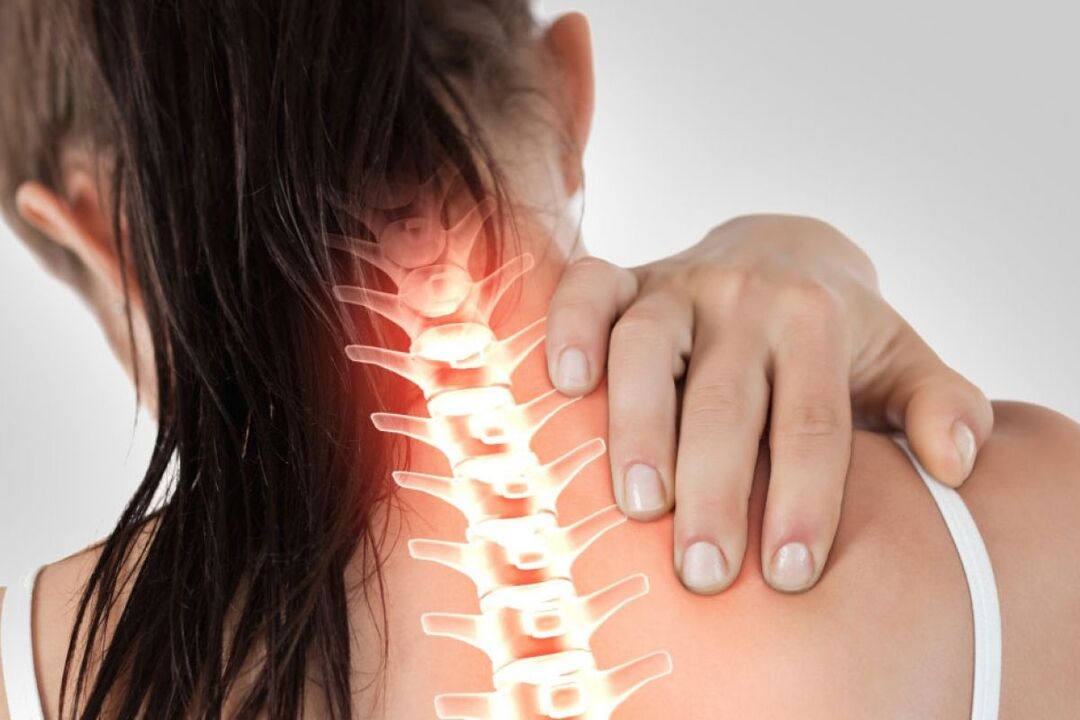Osteochondrosis is a process of degeneration, aging, degradation of cartilage tissue and its transformation into a type of bone. To understand the problem of osteochondrosis, you have to imagine the structure of the spine: it consists of 35 vertebrae, which are placed on top of each other in a column, forming a spinal column. Between the vertebrae there are "pads" - cartilaginous discs (they act as a shock absorber and lubricant when moving the vertebrae), the discs consist of a multi-layered solid ring and a liquid gelatinous nucleus in the center.
To understand the problem of osteochondrosis, you have to imagine the structure of the spine: it consists of 35 vertebrae, which are placed on top of each other in a column, forming a spinal column. Between the vertebrae there are "pads" - cartilaginous discs (they act as a shock absorber and lubricant when moving the vertebrae), the discs consist of a multi-layered solid ring and a liquid gelatinous nucleus in the center.
Symptoms of cervical osteochondrosis:
Everyone knows that the spine becomes thinner in structure near the head. The upper vertebrae that make up the cervical region are long, refined, but very strong and mobile. However, their strength is not unlimited, especially when the daily stress on the neck exceeds the norm. The main causes of cervical spine osteochondrosis are always hidden in these loads.
How cervical spine osteochondrosis manifests itself also depends on the type of load and the location of the vertebral disc injury: each nerve root is responsible for a specific function, that is why the manifestations of cervical osteochondrosis are so different. The development of the disease occurs in 4 stages. Each subsequent is more difficult than the previous one.
Stage 1 of cervical osteochondrosis:
How can I protect my spine from overuse and destructive physical activity (or inactivity)?
First of all, discomfort: stretching, tingling, shooting - all these are the first signs of any spinal disease.
Intervertebral osteochondrosis of the cervical spine begins with a feeling of tension in the neck muscles, their fatigue. The patient may feel slight pain, pressure when turning and tilting the head. Too often, such a concern is perceived as "maybe cold" or "I'm tired of something. "
Do not forget! Pain is a sign, we can say our body signaling, if it worked, it is not just that. The pain can not be ignored or numb with pills!
Phase 2:
The patient already feels stronger pain when turning and tilting the head. Sometimes the pain radiates (spreads) to the right or left arm, the shoulder joint, sometimes to the hand.
On the part of the nervous system, there are still rare headaches, fatigue, fatigue, a missing condition (the initial symptoms of cervical osteochondrosis in women are very similar to the cyclical symptoms of the reproductive system: headache, dizziness, feeling ofweakness, fatigue).
Even if the signs of osteochondrosis of the cervical spine have already become visible, in the second stage there is still every chance to prevent the development of the disease and the appearance of complications. It is especially important to prevent the development of hernias, which in the cervical spine can be dangerous with loss of mobility and impaired blood supply to the brain.
Phase 3:
In the third stage, the disease can already be considered neglected because treating osteochondrosis of the cervical spine at this stage is already much more difficult and the destruction is often irreversible. The pain increases when intervertebral hernias begin to appear.
Persistent weakness and dizziness - due to the constriction of the nerves and large vessels that feed the cerebral cortex, also intensify. Pain is often given to the hands. The innervation of the muscles of the upper extremities is disturbed, as a result of which they weaken. Numbness and tingling in the hands is a common symptom of third-degree degenerative disc disease of the neck.
Phase 4:
The intervertebral discs have already been significantly destroyed and have undergone major changes, the hernias and extensions of each of which have a significant impact on the well-being of the patient. Instead of destroyed discs, connective tissue appears, which deprives the spine of flexibility.
Compression of nerves and blood vessels leads to impaired coordination. Pain, drowsiness, lethargy and dizziness are worse. These add to the noise in the ears. There is a high risk of diseases that can be caused by osteochondrosis:
- When a vertebral artery is constricted by a hernia, it leads to cerebral ischemia and develops up to a spinal stroke;
- Clogging of blood vessels can lead to malnutrition in the cortex or lower parts of the brain. As a result - impaired perception, loss of consciousness;
- Spinal cord compression can also be fatal.

























